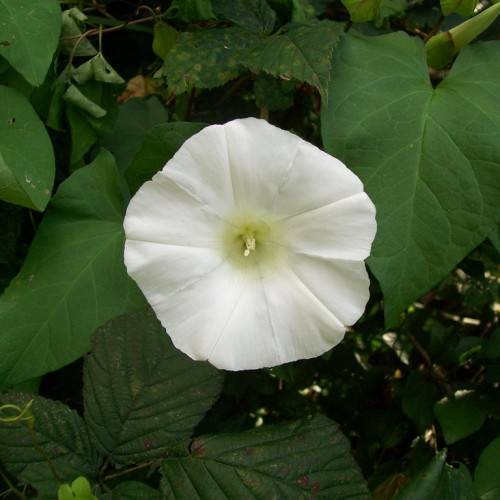
Short-Stalked False Bindweed
Calystegia silvatica
Watering:
Frequent
Hardiness Zone:
Sun:
full sun,part shade
Leaf:
Yes
Growth Rate:
Low
Drought Tolerant:
Yes
Invasive:
Yes
Care Level:
Medium
watering
Wild Morning Glory should be given an inch of water every 7-10 days when temperatures are warm. During the cooler months, water every 2-3 weeks. Make sure to water deeply when providing water, making sure the moisture reaches 12-15 inches deep. Make sure to adjust watering depending on the weather and soil type; sandy soils will require more frequent watering than clay soils. It's also important to keep soil moist but not soggy, as Wild Morning Glory is prone to root rot and other fungal diseases if overwatered.
sunlight
Wild Morning Glory plants prefer plenty of direct sunlight and should be grown outdoors in full sun. During the warmer months, they should receive at least 6 to 8 hours of direct sunlight each day. During the cooler months, they should receive 4 to 6 hours of direct sunlight each day. This will help the plant flower and produce abundant, brightly coloured blossoms.
pruning
Wild Morning Glory tends to be a fast growing, dense plant, so regular pruning is recommended. It should be pruned 2 or 3 times a season; once in spring, summer, and then again in late summer. When pruning in the spring, wait until the plant is actively growing. Cut off any dead or diseased stems and remove any damaged leaves at this time. Summer pruning should be done gently, to encourage additional branching. Cut dead or diseased stems to the base of the plant. In late summer it is recommended to prune more heavily for shaping and to reduce the overall size of the plant. This will also help prevent any winter injury to the plant. Be sure to always use sharp, clean pruning shears for all pruning sessions.
